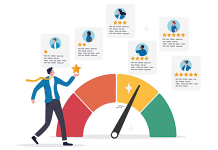The relationships new hires make within a company in their first 90 days is a key indicator of long- term success. Research by the Institute for Corporate Productivity (i4cp) shows that “initiating, engaging and refining specific kinds of relationships when joining an organization and continuing to prioritize network development throughout the transition is a critical differentiator.”
Harvard Business Review research shows that the 10% to 15% of workers in a new position that became well-connected in one- quarter to one-third of the usual time, reap the benefits of rapid productivity, innovation, higher engagement and lower risk of departure. “These fast movers showed that people making transitions today don’t have the luxury of allowing their network connections to form serendipitously. To be successful, you (and those who onboard you) must be intentional,” the HBR report states.
Yet, only 20% of companies surveyed by i4cp indicated that helping new hires establish critical organizational networks is an objective of their onboarding process. Fostering meaningful relationships within the company should be an objective of every onboarding program. It is a responsibility for both the employer and the employee.
Fast movers pursue a broad network of colleagues and build relationships within the first 60 days. i4cp recommends identifying people in five categories — formal leaders; stakeholders; colleagues in support roles; direct reports/teams; and peers. Set a meeting with members from each of these to learn about their role and needs. Learn how they prefer to work, offer help and build rapport.
Fast movers should position their expertise to align with others’ goals and objectives. People will engage with you if what you know can help them. Fast movers should be careful to remain modest and not oversell themselves. Leaders should develop a networks-first mind-set, particularly in today’s mobile and remote work world. They can foster connections by promoting the sharing of expertise in meetings, creating a formal mentor program that pairs new hires with veterans, and continuing onboarding efforts well into the first year.





